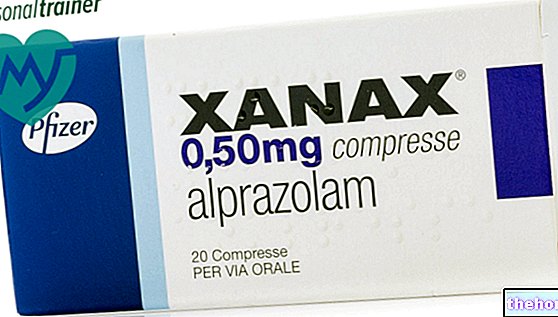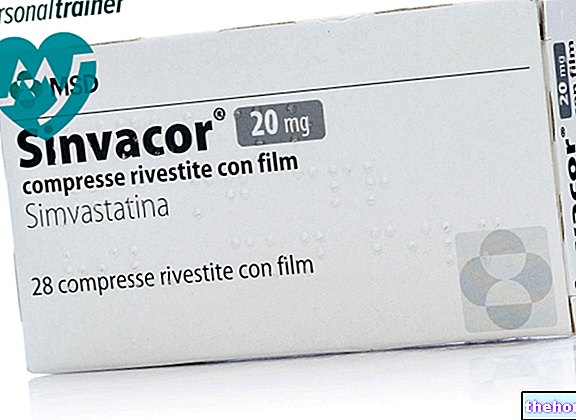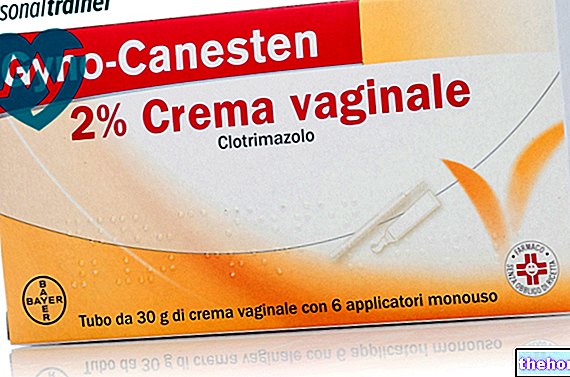Active ingredients: Thiamine (Vitamin B1)
Benerva® (*) 300 mg gastro-resistant tablets
Benerva® (*) 100 mg / 1 ml solution for injection for intramuscular use
Why is Benerva used? What is it for?
Pharmacotherapeutic group
Benerva belongs to the therapeutic category of vitamins based on vitamin B1.
Therapeutic indications
Prophylaxis and therapy of vitamin B1 deficiency due to increased demand or reduced absorption (beriberi and its various clinical forms).
Deficient polyneuritis (ethyl).
Myocardiopathies of alcoholics.
In high doses, adjuvant therapy of neuritis and non-deficient polyneuritis.
Contraindications When Benerva should not be used
Hypersensitivity to the active substance or to any of the excipients.
Precautions for use What you need to know before you take Benerva
Inform your doctor or pharmacist if you have recently taken any medicines, even those without a prescription.
Preparations based on vitamin B1 or derivatives, especially parenterally, can cause problems in subjects who have had sensitization phenomena or morbid manifestations of allergies.
The risk of hypersensitivity reactions is increased with repeated intramuscular administration. Oral administration is therefore preferable where possible.
Interactions Which drugs or foods can modify the effect of Benerva
Tell your doctor if you have recently taken any other medicines, even those without a prescription.
Thiosemicarbazone and 5-fluorouracil inhibit the activity of thiamine
Interference with laboratory tests
- Vitamin B1 can give false positives in the determination of urobilinogen with Ehrlich's reagent
- high doses of vitamin B1 can interfere with the spectrophotometric determination of serum theophylline.
Warnings It is important to know that:
Pregnancy and breastfeeding
Ask your doctor or pharmacist for advice before taking any medicine. This product is not intended for use during pregnancy or breastfeeding.
Driving and using machines
No negative effects of the preparation on these activities are reported or expected. However, patients should observe their reactions to the drug before driving or operating machinery.
Dosage and method of use How to use Benerva: Dosage
Oral administration.
Mild and moderate cases: 100 mg every 24 hours.
Severe cases: 600-1200 mg (2-4 tablets of Benerva of 300 mg) per day for 1-2 weeks, then 300 mg (1 tablet of Benerva of 300 mg) per day for several weeks.
The high-dose Benerva tablets (300 mg) allow for an intensive treatment.
Parenteral administration.
Parenteral administration is reserved for cases with impaired intestinal absorption, as well as in the initial treatment of acute deficiencies, accompanied by polyneuritis, psychic and cardiac disorders, in particular in chronic alcoholism: 50-200 mg i.m. per day.
Overdose What to do if you have taken too much Benerva
Tablets
No cases of overdose have been reported.
Vials
Isolated clinical cases of toxic reactions to prolonged parenteral administration of thiamine probably represent hypersensitivity reactions.
In case of accidental ingestion / intake of an excessive dose of BENERVA, notify your doctor immediately or go to the nearest hospital. If you have any questions about the use of BENERVA, ask your doctor or pharmacist.
Side Effects What are the side effects of Benerva
Like all medicines, Benerva can cause side effects, although not everybody gets them.
Tablets
Disorders of the immune system
In individual cases, allergic and anaphylactic reactions have been reported, with symptoms such as itching, hives, angioedema, abdominal pain, difficulty breathing, tachycardia, palpitations and shock.
Gastrointestinal disorders
Mild gastrointestinal disturbances such as nausea, vomiting, diarrhea and abdominal pain have been reported.
Vials
General disorders and administration site conditions
Pain at the injection site
Disorders of the immune system
Allergic and anaphylactic reactions with symptoms such as itching, hives, angioedema, abdominal pain, difficulty breathing, tachycardia, palpitations and shock have been reported, usually after intravenous, intramuscular or subcutaneous injection. These reactions are often preceded by sneezing or transient itching.
If any of the side effects gets serious, or if you notice any side effects not listed in this leaflet, please tell your doctor or pharmacist. Compliance with the instructions contained in the package leaflet reduces the risk of undesirable effects.
Expiry and Retention
Expiry: see the expiry date indicated on the package.
Warning: do not use the medicine after the expiry date shown on the package.
The expiry date refers to the product in intact and correctly stored packaging.
Tablets
Store in the original packaging
Vials
Store below 25 ° C.
Medicines should not be disposed of via wastewater or household waste. Ask your pharmacist how to dispose of medicines you no longer use. This will help protect the environment.
Keep this medicine out of the reach and sight of children
Composition and pharmaceutical form
Composition
Benerva 300 mg gastro-resistant tablets: one tablet contains thiamine hydrochloride (vitamin B1) 300 mg.
Excipients: talc, povidone K90, magnesium stearate, methacrylic acid - ethyl acrylate copolymer (1: 1), macrogol 6000, carmellose sodium. Benerva 100 mg / 1 ml solution for injection: one ampoule of 1 ml contains 100 mg thiamine hydrochloride (vitamin B1). Excipients: phenol, glycerol, monobasic sodium phosphate dihydrate, sodium bicarbonate, water for injections.
Pharmaceutical form and content
Benerva 300 mg gastro-resistant tablets: 20 tablets. Benerva 100 mg / 1 ml solution for injection: 6 ampoules i.m.
Source Package Leaflet: AIFA (Italian Medicines Agency). Content published in January 2016. The information present may not be up-to-date.
To have access to the most up-to-date version, it is advisable to access the AIFA (Italian Medicines Agency) website. Disclaimer and useful information.
01.0 NAME OF THE MEDICINAL PRODUCT
BENERVA
02.0 QUALITATIVE AND QUANTITATIVE COMPOSITION
Benerva 300 mg gastro-resistant tablets.
One tablet contains 300 mg of thiamine hydrochloride (vitamin B1).
Benerva 100 mg / 1 ml solution for injection for intramuscular use.
A 1 ml ampoule contains 100 mg of thiamine hydrochloride (vitamin B1).
For the full list of excipients, see 6.1.
03.0 PHARMACEUTICAL FORM
Benerva is available as gastro-resistant tablets for oral use and as a solution for injection for intramuscular use.
04.0 CLINICAL INFORMATION
04.1 Therapeutic indications
Prophylaxis and therapy of vitamin B1 deficiency due to increased demand or reduced absorption (beriberi and its various clinical forms).
Deficient polyneuritis (ethyl).
Myocardiopathies of alcoholics.
In high doses, adjuvant therapy of neuritis and non-deficient polyneuritis.
04.2 Posology and method of administration
Oral administration.
Mild and moderate cases: 100 mg every 24 hours.
Severe cases: 600-1200 mg (2-4 tablets of Benerva of 300 mg) per day for 1-2 weeks, then 300 mg (1 tablet of Benerva of 300 mg) per day for several weeks.
The high-dose Benerva tablets (300 mg) allow for an intensive treatment.
Parenteral administration.
Parenteral administration is reserved for cases with impaired intestinal absorption, as well as in the initial treatment of acute deficiencies, accompanied by polyneuritis, psychic and cardiac disorders, in particular in chronic alcoholism: 50-200 mg i.m. per day.
04.3 Contraindications
Tablets
Known hypersensitivity to the active substance or to any of the excipients.
Vials
Known or suspected hypersensitivity to the active substance or to any of the excipients.
04.4 Special warnings and appropriate precautions for use
Preparations based on vitamin B1 or derivatives, especially parenterally, can cause problems in subjects who have had sensitization phenomena or morbid manifestations of allergies.
The risk of hypersensitivity reactions is increased with repeated intramuscular administration. Oral administration is therefore preferable where possible.
04.5 Interactions with other medicinal products and other forms of interaction
Thiosemicarbazone and 5-fluorouracil inhibit the activity of thiamine.
Interference with laboratory tests:
• Vitamin B1 can give false positives in the determination of urobilinogen with Ehrlich's reagent
• high doses of vitamin B1 can interfere with the spectrophotometric determination of serum theophylline.
04.6 Pregnancy and lactation
This product is not intended for use during pregnancy or breastfeeding.
04.7 Effects on ability to drive and use machines
No negative effects of the preparation on these activities are reported or expected.
However, patients should be advised to observe their reactions to the drug before driving or operating machinery.
04.8 Undesirable effects
The undesirable effects listed below derive from spontaneous reports and therefore it is not possible to classify them by frequency categories.
Tablets
Disorders of the immune system
In individual cases, allergic and anaphylactic reactions have been reported, with symptoms such as itching, hives, angioedema, abdominal pain, difficulty breathing, tachycardia, palpitations and shock.
Gastrointestinal disorders
Mild gastrointestinal disturbances such as nausea, vomiting, diarrhea and abdominal pain have been reported.
Vials
General disorders and administration site conditions
Pain at the injection site
Disorders of the immune system
Allergic and anaphylactic reactions with symptoms such as itching, hives, angioedema, abdominal pain, difficulty breathing, tachycardia, palpitations and shock have been reported, usually after intravenous, intramuscular or subcutaneous injection. These reactions are often preceded by sneezing or transient itching.
04.9 Overdose
Tablets
No cases of overdose have been reported.
Vials
Isolated clinical cases of toxic reactions to prolonged parenteral administration of thiamine probably represent hypersensitivity reactions.
05.0 PHARMACOLOGICAL PROPERTIES
05.1 Pharmacodynamic properties
Pharmacotherapeutic group: unassociated vitamin B1, ATC code: A11DA01
Thiamine pyrophosphate, the coenzymatic form of vitamin B1, is the cofactor of a series of enzymes involved in the intermediate metabolism of carbohydrates. It takes part in the oxidative decarboxylation of alpha-ketoacids, such as pyruvic acid, alpha-keto-glutaric acid and branched-chain ketoacids, and in transketolation (eg. Between pentose- and hexose-phosphates) and its requirement is correlated with the carbohydrate intake.
In addition to its metabolic role as a coenzyme, vitamin B1 plays a role in neurotransmitter function and nerve conduction.
In high doses, vitamin B1 suppresses the transmission of nerve stimuli and can have an analgesic effect.
The early stages of vitamin B1 deficiency can be accompanied by non-specific symptoms that can be overlooked or easily misinterpreted. Clinical signs of deficiency include anorexia, weight loss, mental disorders such as apathy, decreased short-term memory, confusion and irritability, muscle weakness and cardiovascular effects such as dilation of the heart.
Situations often accompanied by marginal vitamin B1 deficiency, and requiring supplemental intake of the vitamin, include habitual high alcohol consumption, a carbohydrate-rich diet and heavy exercise.
The functional consequences of severe vitamin B1 deficiency are heart failure, muscle weakness, central and peripheral neuropathies.
Clinical manifestations of beriberi (severe vitamin B1 deficiency) vary with age. Adults can be dry (paralytic or nervous), wet (cardiac), or cerebral (Wernickle-Korsakoff syndrome).
Such conditions must be treated promptly with vitamin B1.
Severe vitamin B1 deficiency in industrialized countries is generally linked to excessive alcohol consumption associated with a reduced dietary intake.
In these cases, renal and cardiovascular complications are life-threatening.
05.2 "Pharmacokinetic properties
Absorption
Vitamin B1 is rapidly absorbed in humans, largely in the proximal tract of the small intestine.
Absorption in the intestine occurs by sodium-dependent active transport at low physiological concentrations (
Absorption is high, but intestinal absorption in humans is limited.
The need for vitamin B1 is directly related to the intake of carbohydrates and corresponds to 0.5 mg per 1000 calories. In diets with a high calorie content, and in particular carbohydrate, the need for thiamine is increased.
Distribution
The average total amount of vitamin B1 present in the adult is about 30 mg. In general, the heart has the highest content (0.28-0.79 mg per 100 g), followed by the kidney (0.24-0 , 58), the liver (0.20-0.7e) and the brain (0.14-0.44).
In the spinal cord and brain, the level of vitamin B1 is about double that of the peripheral nerves.
The concentration of vitamin B1 in whole blood ranges from 5 to 12 mcg per 100 ml, 90% of which is found in red blood cells and leukocytes.
Leukocytes have a concentration 10 times higher than red blood cells.
Vitamin B1 has a relatively high turnover in the organism and is not stored in large quantities in the tissues. For this reason, a continuous supply of it is necessary. Relatively short periods of inadequate intake can cause first biochemical and then clinical signs of deficiency. When the intake is about 60 mcg per 100 g of body weight (or 42 mg per 70 kg) and the total amount of vitamin B1 in the body reaches 2 mcg / g (or 140 mg per 70 kg), it is reached a plateau in most fabrics.
The transport of vitamin B1 across the blood-brain barrier also occurs through two different mechanisms.
The saturable mechanism at the blood-brain barrier, however, differs from the energy-dependent mechanism described in the gut and from the active transport system described in cells of the cerebral cortex, which may be dependent on membrane-bound phosphatases.
The immunohistochemical distribution of thiamine pyrophosphate suggests its role in nerve conduction.
Metabolism
Oral (or parenteral) thiamine is rapidly converted to diphosphate esters, and to a lesser extent triphosphate, in tissues.
Vitamin B1 in excess of the tissue requirements and the binding and storage capacity is rapidly excreted in the urine. A parenteral thiamine intake of 10 mcg per 100 mg of body weight (or 7 mg per 70 kg) has been shown to be adequate for growth in rats, but results in sub-normal tissue levels.
The stimulation of the nerves causes the release of thiamine or monophosphate, with a simultaneous decrease of tri- and diphosphates.
Excretion
Vitamin B1 is excreted in the urine. In "humans," there is a slight increase in urinary excretion of vitamin B1 when oral doses greater than 2.5 mg are administered. The half-life of vitamin B1 in the body is 10-20 days. In addition to free vitamin B1 and to a small amount of thiamine diphosphate, thiochrome and thiamine disulfide, 20 or more metabolites of vitamin B1 were detected in rat and human urine, but only six of these were identified. The relative excretion of metabolites relative to vitamin B1 it increases with the decrease of vitamin B1 intake.
05.3 Preclinical safety data
There are no specific studies with this product but the preclinical safety of vitamin B1 is well documented.
Vitamin B1 (thiamine) is devoid of toxic effects, with the exception of the rare allergic reactions occurring after repeated intravenous administration.
06.0 PHARMACEUTICAL INFORMATION
06.1 Excipients
Benerva 300 mg gastro-resistant tablets
Talc, povidone K90, magnesium stearate, methacrylic acid - ethyl acrylate copolymer (1: 1), macrogol 6000, carmellose sodium.
Benerva 100 mg / 1 ml solution for injection for intramuscular use
Phenol, glycerol, monobasic sodium phosphate dihydrate, sodium bicarbonate, water for injections.
06.2 Incompatibility
Vials
Do not mix with other parenteral products or other liquids for injection.
06.3 Period of validity
Gastro-resistant tablets: 3 years.
Solution for injection for intramuscular use: 5 years.
The expiry date indicated refers to the product in intact packaging, correctly stored.
06.4 Special precautions for storage
Tablets
Store in the original packaging.
Vials
Store below 25 ° C.
06.5 Nature of the immediate packaging and contents of the package
Benerva 300 mg gastro-resistant tablets
Aluminum-PVC / PVDC blister.
Pack of 20 tablets.
Benerva 100 mg / 1 ml solution for injection for intramuscular use
Colorless glass vials I hydrolytic class.
Pack of 6 ampoules.
06.6 Instructions for use and handling
No special instructions.
07.0 MARKETING AUTHORIZATION HOLDER
Bayer S.p.A. Viale Certosa 130, 20156 Milan
08.0 MARKETING AUTHORIZATION NUMBER
"300 mg gastro-resistant tablets" 20 tablets AIC n ° 004642031
"100 mg / 1 ml solution for injection for intramuscular use" 6 ampoules AIC n ° 004642070
09.0 DATE OF FIRST AUTHORIZATION OR RENEWAL OF THE AUTHORIZATION
Renewal: June 2010
10.0 DATE OF REVISION OF THE TEXT
AIFA determination of July 2010























-nelle-carni-di-maiale.jpg)




